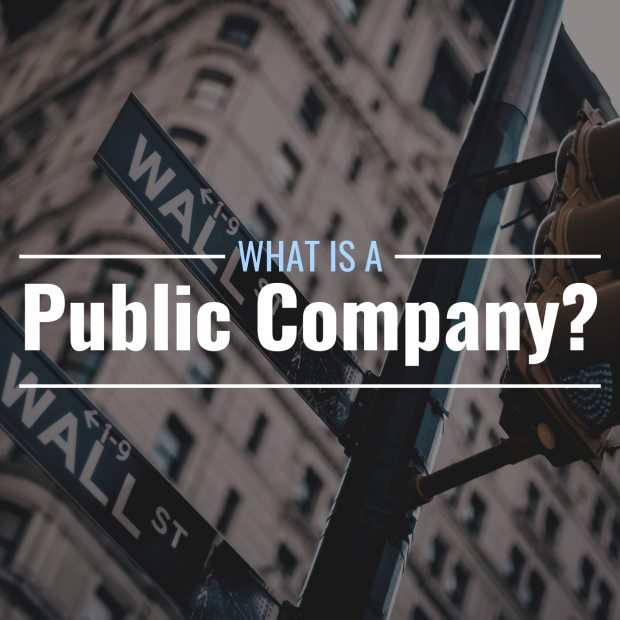
What is a publicly traded company?
A publicly traded company (often just called a public company) is one whose stock can be bought and sold by the general public, either on a major stock exchange like the NYSE or on the over-the-counter market.
Every public company reports its financial performance to the Securities and Exchange Commission (SEC) and the general public quarterly and annually, and its stock goes up and down in value depending on the public’s perception of its performance relative to its peers.
Anyone with a retirement account like a 401(k) or IRA probably owns some amount of stock in multiple public companies whether they know it or not.
Important characteristics of public companies
Public companies vary tremendously in size and span every imaginable industry, but they all share certain attributes:
- A public company is a legal entity that exists separately from its shareholders. Its corporate identity is not necessarily reflective of its owners or executives.
- A public company has a theoretically unlimited lifespan. Unless it is dissolved, liquidated, or acquired, it can continue its operations in perpetuity regardless of changes to its ownership, directors, board members, and staff.
- The owners (shareholders) of public companies have limited financial liability when it comes to that company’s operations, meaning they cannot legally be held responsible for the company’s losses.
- A public company’s ongoing operations are not directly managed by its owners (shareholders) and are instead conducted by the company’s executives and other employees.
- A public company can raise capital by issuing shares of ownership to the public.
Who owns a public company?
Each share of a company’s stock represents a unit of ownership, so public companies are actually owned—at least in part—by members of the public. For this reason, the shareholders of public companies are entitled to voting rights about important company decisions proportional to the amount of stock they own. This being said, most individual retail investors could never own enough shares of a public company to have significant sway in the way a company operates.
Individuals, hedge funds, mutual funds, banks, and other businesses can all own shares in public companies, so the ownership of a company can be quite diverse and represent a variety of different interests.
In some cases, a public company may have a majority shareholder, or an individual who possesses more than 50% of the company’s shares. When this is the case, the majority shareholder is typically able to exercise significant control over important company decisions using their voting power. A company’s majority shareholder is often its CEO, founder, or a descendant of its founder.
Most large public companies do not have a single majority shareholder and instead have many important stakeholders, or entities with significant interest in (and influence on) the business. In these cases, the company’s leadership (C-level executives) typically make most of the business’s important operational decisions, while its shareholders (both major and minor) vote to determine high-level outcomes like mergers, changes to bylaws, and changes to the board of directors.
What does it mean when a company “goes public?” How does it work?
Typically, a private company “goes public” by issuing an initial public offering, or IPO. In order to do this, the company must first secure one or more underwriters, usually investment banks that are willing and able to risk purchasing the number of shares the company wishes to issue so they can later be sold to interested market participants when the IPO occurs.
Next, the company, with the help of its underwriter(s), must file a registration statement (formally known as Form S-1) with the SEC. This document includes a prospectus, which contains audited financial records and provides details about the company’s financial health, business operations, legal challenges, and other important information. The S-1 also details the number of shares to be issued and a detailed plan outlining what the proceeds will be used for.
While the SEC reviews the company’s registration statement, the company’s underwriters go on a “road show” to drum up interest in the company’s IPO, take orders from prospective investors—usually institutional investors like banks, hedge funds, and brokerages—and determine an appropriate share price for the offering.
Once the shares are sold to these initial, large-scale investors, they begin trading on the open market. At this point, they can be bought and sold by any market participant, from retail investors to fund managers, and the now-public company’s stock price begins to fluctuate according to the whims of the market.
Why do private companies go public?
Companies typically go public for several reasons. First, by issuing shares, a company is able to raise capital to the tune of the price per share multiplied by the number of shares issued. These funds can then be used to pay down existing debt or fund new marketing or development efforts. Additionally, by going public, a company puts itself in the limelight to a certain degree by opening up ownership to the market at large. This can help a company gain notoriety, brand recognition, and market share.
In some cases, the founder or founders of a growing startup might take their business public in order to “cash out” of the venture, step down as leaders, and pass the operation of the company into new hands.
Can public companies go private again?
Companies that have gone public can and often do go private again. This typically occurs when an interested party—this can be company leadership or an outside entity like a private equity firm—offers to buy all of the company’s outstanding shares, usually at a premium over their market price to compensate shareholders for relinquishing their ownership.
Once this transaction is complete, the company is delisted from its exchange and can no longer be traded publicly. Once a formerly public company goes private, it is no longer beholden to the SEC’s financial reporting requirements, and its owners no longer need to focus on pleasing shareholders to the same degree.
Why do public companies go private?
Companies usually go private for one of two reasons. In some cases, company leadership believes that the company’s stock is significantly undervalued by the market and wants to exercise more control over the business with less public and regulatory scrutiny.
In other cases, the company may receive an offer from a private equity firm that wants to purchase the company, restructure it, and then resell private equity shares (or the whole company) for a profit.
Additionally, the costs of operating a public company can be high, and this can incentivize the leadership of a public company to go private. Once a company is public, additional paid staff may be required to generate quarterly financial documents. These statements must be reviewed by independent auditors, and this review process is also expensive. Most public companies also have an investor-relations department, which means even more paid staff.
What are the benefits and drawbacks of a company going public?
| Pros | Cons |
|---|---|
Raises money to expand operations or pay off debt |
Increases reporting requirements and costs |
Grows public awareness |
Process can be expensive and time-consuming |
Increases stock liquidity |
Increases regulatory oversight |







